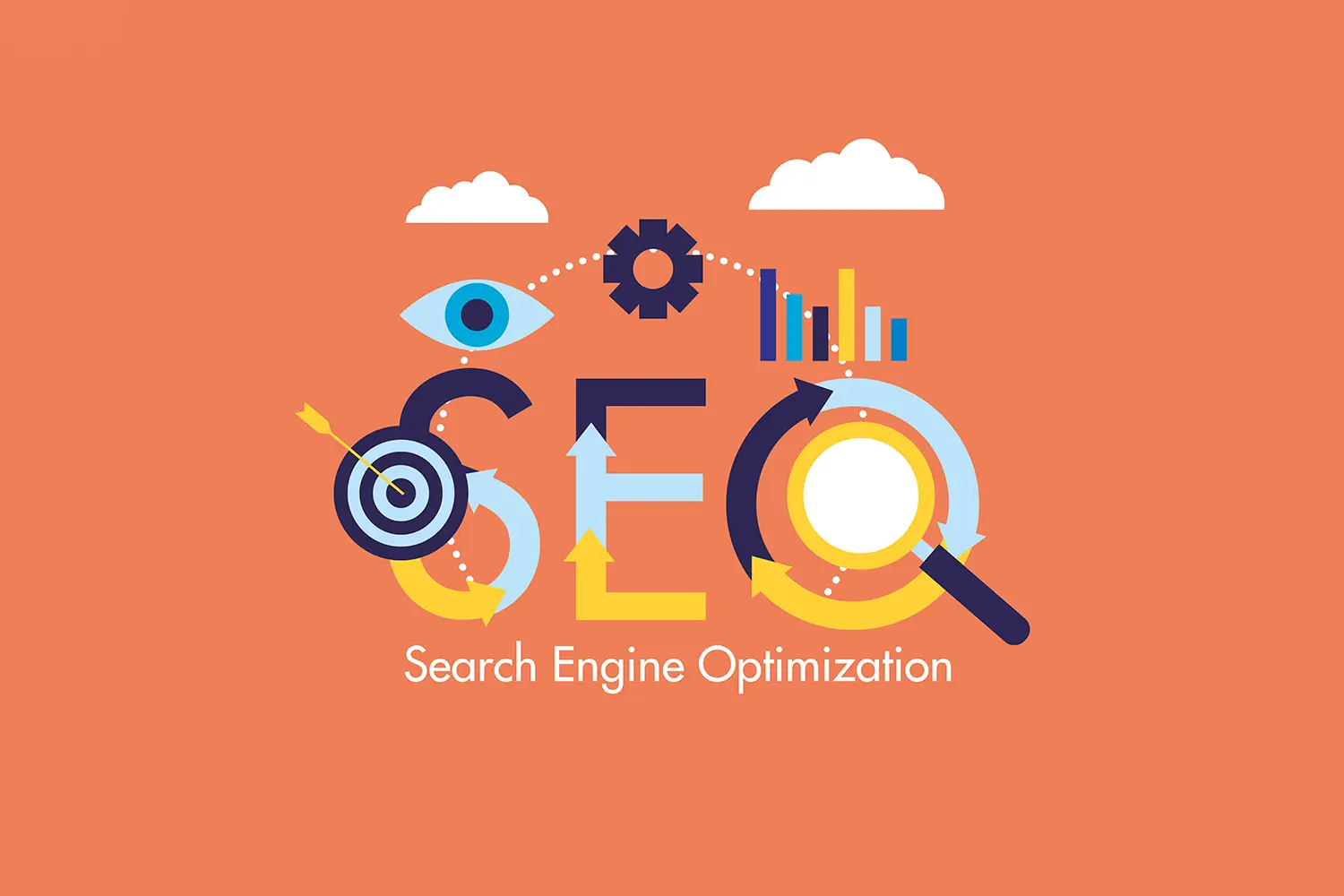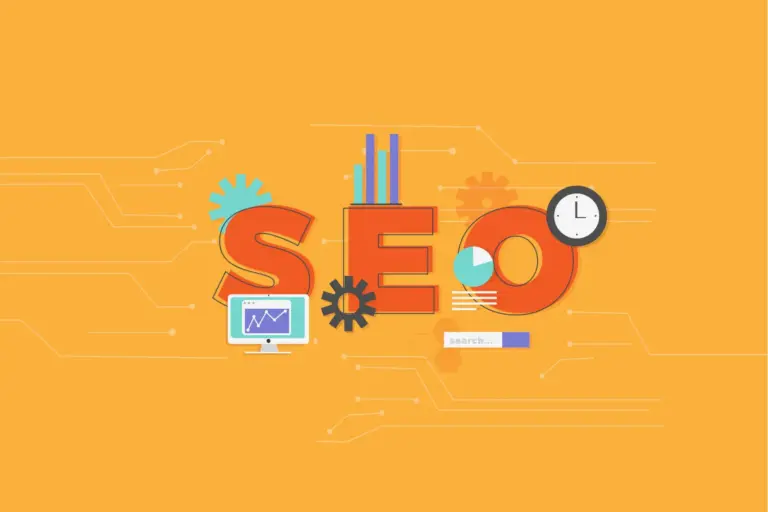What is SEO? Your Ultimate Guide to Getting Found on Google in 2025
Imagine you’ve just opened the most amazing shop in the world. You have the best products, the most helpful staff, and a beautifully designed space. There’s just one problem: you built it in the middle of a desert, miles from any road, with no signs to lead people there.
That brilliant shop is your website. And that empty desert is the internet without SEO.
SEO, or Search Engine Optimization, is the art and science of building roads and putting up giant, flashing signposts that lead directly from search engines like Google to your digital doorstep.
It’s the process of making your website more visible, more authoritative, and more helpful in the eyes of search engines, so when your ideal customer types a question or a need into that little search box, your website appears as the best possible answer.
For many, the term “SEO” sounds like a dark art—a complex, technical world of algorithms, keywords, and secret handshakes. But here’s the truth: at its heart, SEO is about empathy. It’s about understanding what people are searching for and creating the best, most helpful content and user experience to meet that need.
This is your friendly, definitive guide to understanding SEO in 2025. We’re going to demystify the jargon, break down how search engines actually work, explore the core pillars of a successful SEO strategy, and show you why it is the single most powerful marketing channel for long-term, sustainable business growth.

Why SEO Matters More Than Ever (Hint: It’s Not Just About Traffic)
Before we dive into the “how,” let’s talk about the “why.” In an age of fleeting social media trends and ever-rising ad costs, why should you invest your time and effort into SEO?
- It Builds Trust and Credibility: People inherently trust Google’s organic results more than paid ads. Ranking high for relevant terms positions your brand as an authoritative and trustworthy leader in your industry.
- It’s a Sustainable, Long-Term Asset: A well-executed paid ad campaign stops the second you stop paying. A well-ranked page, however, can bring in qualified traffic for months or even years, becoming a valuable digital asset that works for you 24/7.
- You Reach Customers at the Perfect Moment: SEO connects you with potential customers at the exact moment they are actively searching for a solution you provide. You’re not interrupting their day with an ad; you’re offering a solution to a problem they already have.
- It Provides Invaluable Business Insights: The data you get from SEO (through tools like Google Search Console) tells you exactly what your customers are looking for, the language they use, and the questions they have. This is a goldmine for product development, content strategy, and overall business intelligence.
In short, SEO isn’t just a marketing tactic; it’s a fundamental business strategy.
How Do Search Engines Actually Work? (The 3-Step Process)
To win at SEO, you first need to understand the game. Search engines like Google have one primary goal: to provide the user with the most relevant, high-quality results for their query as quickly as possible. To do this, they perform three core tasks:
- Crawling: Google uses an army of automated robots (called “spiders” or “crawlers”) to constantly travel the web, 24/7, discovering new and updated pages. They follow links from one page to another to map out the vast expanse of the internet.
- Indexing: Once a page is crawled, Google analyzes its content—the text, images, videos, and code—and stores this information in a gigantic library called an “index.” When you search on Google, you aren’t searching the live internet; you’re searching Google’s neatly organized index of it.
- Ranking: This is the magic step. When a user performs a search, Google’s complex algorithm sifts through its index to find the best possible matches. It then ranks these pages based on hundreds of different factors to determine the most relevant and authoritative order.
Your job in SEO is to make each of these three steps as easy and rewarding as possible for Google. This is where the three core pillars of SEO come in.
The Three Pillars of a Successful SEO Strategy
SEO can feel overwhelming, but nearly every activity you perform can be neatly organized into one of three main categories. Understanding these pillars is the key to building a holistic and effective strategy.
Pillar 1: On-Page SEO (The Content & Structure of Your House)
On-Page SEO refers to all the actions you take on your own website to help search engines understand what your content is about and signal its quality. This is the pillar you have the most direct control over.
Key Components of On-Page SEO:
- Keyword Research: This is the foundation of all SEO. It’s the process of discovering the words and phrases (keywords) your target audience is actually typing into Google. The goal is to find relevant keywords that have a healthy search volume but are not impossibly competitive to rank for.
- High-Quality, Helpful Content: This is the single most important ranking factor. Your content must be comprehensive, well-written, engaging, and, above all, it must satisfy the “search intent” of the keyword. If someone searches for “how to bake a cake,” they want a recipe, not a history of baking. Your content must be the best answer.
- Title Tags: This is the clickable headline that appears in the search results. It should be compelling and include your primary keyword.
- Meta Descriptions: The short snippet of text below the title in search results. While not a direct ranking factor, a well-written meta description acts like a mini-advertisement that entices users to click on your result over a competitor’s.
- Header Tags (H1, H2, H3): These are used to structure your content. Your main title should be an H1 tag. Subheadings should use H2 and H3 tags. This makes your content easier for both humans and search engine crawlers to read and understand.
- Image SEO (Alt Text): The “alt text” is a short, descriptive text you add to your images. It helps search engines “see” what your image is about and is crucial for web accessibility for visually impaired users.
- Internal Linking: This is the simple act of linking from one page on your website to another relevant page on your website. It helps Google understand the relationship between your content, spreads “link equity” (ranking power) throughout your site, and keeps users engaged longer.
Pillar 2: Off-Page SEO (Your Reputation & Authority on the Street)
Off-Page SEO refers to all the actions taken outside of your own website to build its authority and reputation. It’s about showing search engines that your site is a trusted, respected, and important player in your industry.
The King of Off-Page SEO: Backlinks
The single most important component of off-page SEO is backlinks. A backlink is simply a link from another website to your website.
Think of it like this: in the academic world, when a research paper is cited by many other respected papers, it’s seen as an authoritative and important source. On the internet, backlinks are the “citations.”
When a high-quality, relevant website links to your site, it’s essentially casting a vote of confidence. It’s telling Google, “Hey, this content over here is valuable and trustworthy.”
What makes a good backlink?
- Relevance: A link from a popular baking blog is far more valuable to your cake recipe page than a link from a random car repair website.
- Authority: A link from a major, trusted site like the New York Times is exponentially more powerful than a link from a brand-new, unknown blog.
- Context: The placement and “anchor text” (the clickable words) of the link also matter.
Building a healthy backlink profile takes time and effort, often through strategies like creating amazing, link-worthy content (link bait), guest blogging on other sites, and building relationships in your industry.
Pillar 3: Technical SEO (The Foundation & Plumbing of Your House)
Technical SEO is the process of ensuring your website’s foundation is solid, allowing search engines to crawl and index your site without any issues. If your technical SEO is poor, all your hard work on content and backlinks can be wasted.
Key Components of Technical SEO:
- Website Speed: A slow website is a death sentence for SEO. Your site needs to load quickly, especially on mobile devices. This is a crucial part of Google’s Core Web Vitals.
- Mobile-Friendliness: Your website must look and function perfectly on a smartphone. This is non-negotiable, as Google uses “mobile-first indexing.”
- Crawlability & Indexability: You need to ensure that search engine crawlers can easily access all the important pages on your site and that you aren’t accidentally blocking them.
- XML Sitemap: This is a simple file that acts as a roadmap of your website, listing all your important URLs to help search engines find and index your content more efficiently.
- Secure Website (HTTPS): Your site needs to use HTTPS encryption (the little padlock in the address bar). It’s a sign of trust for users and a confirmed, albeit small, ranking signal for Google.
- Clean URL Structure: Your URLs should be simple, logical, and easy to read (e.g.,
yoursite.com/blog/how-to-bake-a-cakeis much better thanyoursite.com/index.php?p=123).
The Final Verdict: SEO is a Marathon, Not a Sprint
Understanding “what is SEO?” is the first step on a long and incredibly rewarding journey. It’s a dynamic field that is always evolving, but its core principles remain constant: create valuable content, build real authority, and ensure a flawless user experience.
Don’t be intimidated by the complexity. Start with the basics. Create the best content you possibly can for your audience. Make sure your website is fast and easy to use. The results won’t come overnight, but the effort you invest in building a solid SEO foundation will pay dividends for years to come, creating a sustainable engine for growth that is entirely your own. Now, go build those roads to your digital doorstep.
Share Post:




